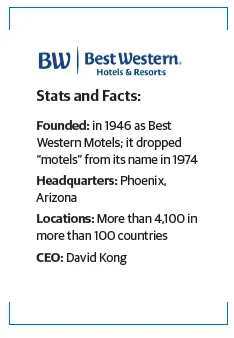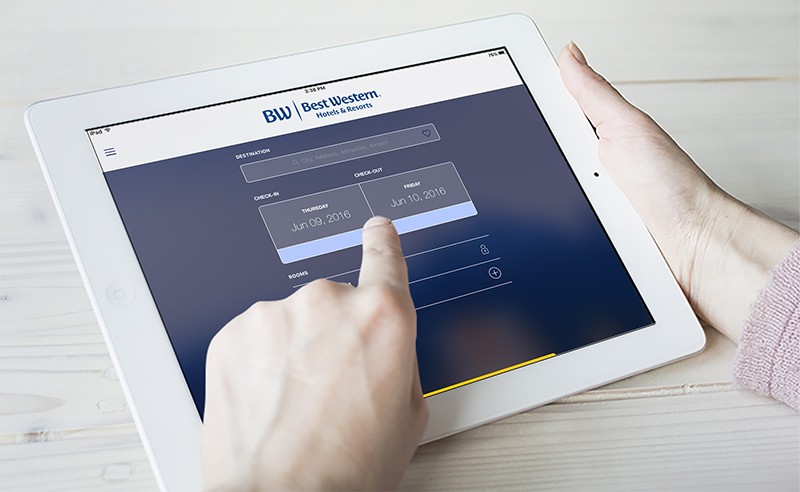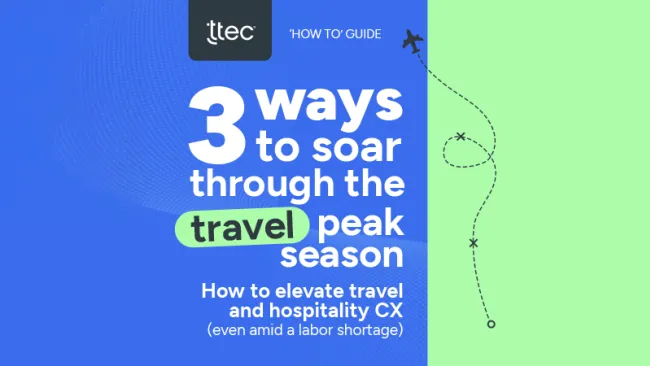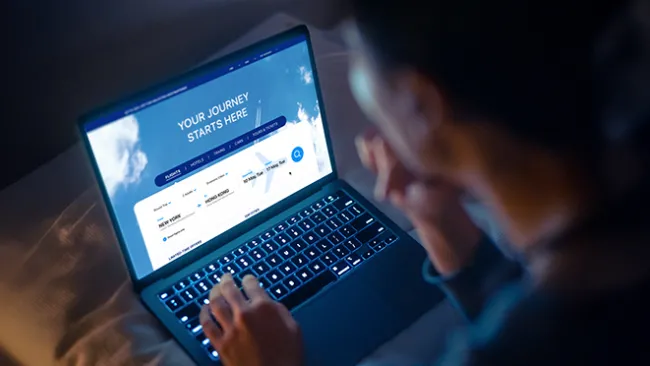In today’s increasingly digital-first world, consumers expect brands to provide seamless offline and online service. To keep up with its customers’ expectations, hotel chain Best Western International is on a mission to reinvent its guest experience. Two years ago the company embarked on an ongoing initiative to modernize its digital properties and link them with offline experiences. But implementing the necessary changes is difficult without a leader to streamline communications among departments and shepherd projects to completion.
Enter Lonnie Boutté. Hired in January 2016 as senior manager of digital outreach, Boutté’s job is to be a liaison across departments and communicate the company’s digital vision to key stakeholders. But don’t think of him as a silo buster.
“I don’t care for the term ‘silo buster,’” Boutté says. “Companies are designed with silos so that teams can focus on certain objectives. What I’d like to think I’m doing is creating functional pathways into those silos while allowing them to exist.”
Prior to Boutté’s arrival, Best Western was already on a path to streamlining its brand. In July 2015, the company rolled out 2,056 subdomain sites under the corporate Best Western site, highlighting each hotel’s unique location and nearby attractions. And later that year, the company unveiled upgrades to its mobile site and app, such as the ability to filter search results by popularity, rate, or amenities in addition to letting users check their points under the company’s loyalty program.
The hotel chain also plans to launch a global responsive site in which both its desktop and mobile sites will be powered by a central platform (the current mobile site is a standalone site) and the sites will automatically adapt to whichever device the consumer uses. Additionally, the company plans to add new features to its app that guests have requested, such as the ability to check in and out via the app.
Behind the omnichannel curtain
Cross-functional collaboration is required in order to bring these omnichannel initiatives to life. This includes a holistic approach to data design, restructuring, collection and storage, as well as marketing, technology, and communications to ensure that there are no silos during digital transformation. To help departments stay on track and connected, Boutté’s first task was to develop a communication plan that links all the stakeholders in the organization. “We’re still in the early stages of the initiative,” Boutté says. “And so my plan is to identify what processes impact which group and what that group needs to know to adjust to that change. I have been working with all departments to communicate our digital plans and how it will benefit their respective departments and the company as a whole.”

Boutté points to managing links as an example. Like any large organization, Best Western has a complicated web of links across its various websites. The marketing department, for instance, may update a link for a new campaign but “as that link changes, the consumer or partner could get an error message if we don’t have a system in place for communicating the new link function to other groups,” Boutté says. The question Boutté says he asks most often is, “What information does your team have that’s useful for others?”
Boutté’s job also includes what he refers to as “identifying where the bones are buried.” Particularly at established companies, “you have people who transfer from one department to another and who have developed relationships and preconceived notions about other departments,” he says. Boutté explained that his job is to find out what those preconceived notions are and whether it has an impact on a project’s success. “If there’s a misunderstanding I have to clear it up quickly,” though he declined specifics.
Naturally, Boutté spends a large portion of his day attending departmental meetings and sharing what he learns with each group. But given that his role was created by the e-commerce team, he occasionally finds himself clarifying his role. “There were some assumptions that my loyalty is to e-commerce and I’ve had to explain my loyalty is to the company’s success,” Boutté says. “My role may be allocated to e-commerce, but I don’t belong to any one department.”
Finding strength from within
Boutté say that his role as outreach officer is made easier because the company is in the process of implementing a strategy execution model known as RACI (Responsibility, Accountability, Consult, Informed), as well as the Gallup Strength Finder.
Under RACI, individuals are identified by the roles they play in executing a project to minimize overlapping responsibilities. For example, one person or group is responsible for completing the task or objective. Other stakeholders are consultants who provide input before the work can be signed-off on by an individual. And finally, other people may need to receive updates on the project, but are not formally consulted on decisions related to the task.
Additionally, Best Western has adopted the Gallup Strength Finder methodology to help employees identify their communication styles. After filling out a questionnaire, employees receive a plaque that is placed outside their office listing their top five strengths. Boutté’s strengths are individualization, relator, responsibility, developer, and includer. “The idea is that before we speak with a colleague, we already have an idea of how to communicate with that person,” Boutté says. “When a company helps its employees define their roles and communication styles, issues are minimized and things get smooth really fast.”
Furthermore, it helps to have experience in various organizational roles. Before his current position, Boutté held roles in sales, marketing, and operations. An outreach officer works “across multiple platforms and departments and the best way to connect with people is to understand what they do,” he says.
And while Boutté has held this role for only a short time, employees are already beginning to trust him. Members of various teams are increasingly reaching out to brief Boutté on their progress, as well as ask questions about other parts of the organization. Although employees reaching out to Boutté is a good thing, he says it should be temporary. “Having people from different departments come to me for information is OK for the short term, but eventually they should communicate directly between each other.”
In other words, if everything goes as planned, Boutté’s role will become obsolete. As an outreach officer, he insists he is fine with that. In fact, an important quality to look for in candidates for this role is someone who is not looking for a promotion and just wants to get the job done.
“Ultimately you want someone who understands that a role like this comes with an expiration date,” he says. On the other hand, other roles and responsibilities could open up, especially as technology continues to advance. “With the rapid changes that are taking place in digital, and particularly at large companies such as this, new opportunities continue to present themselves. If I only do what I’m doing for the next three to five years, I’d be quite happy.”

















